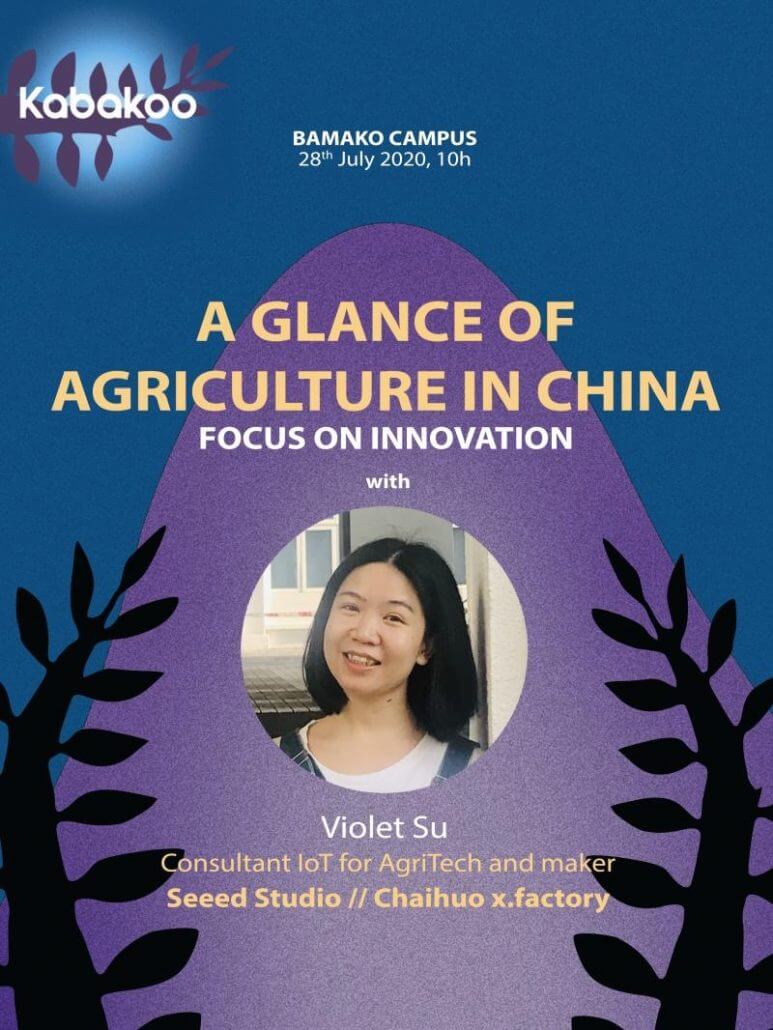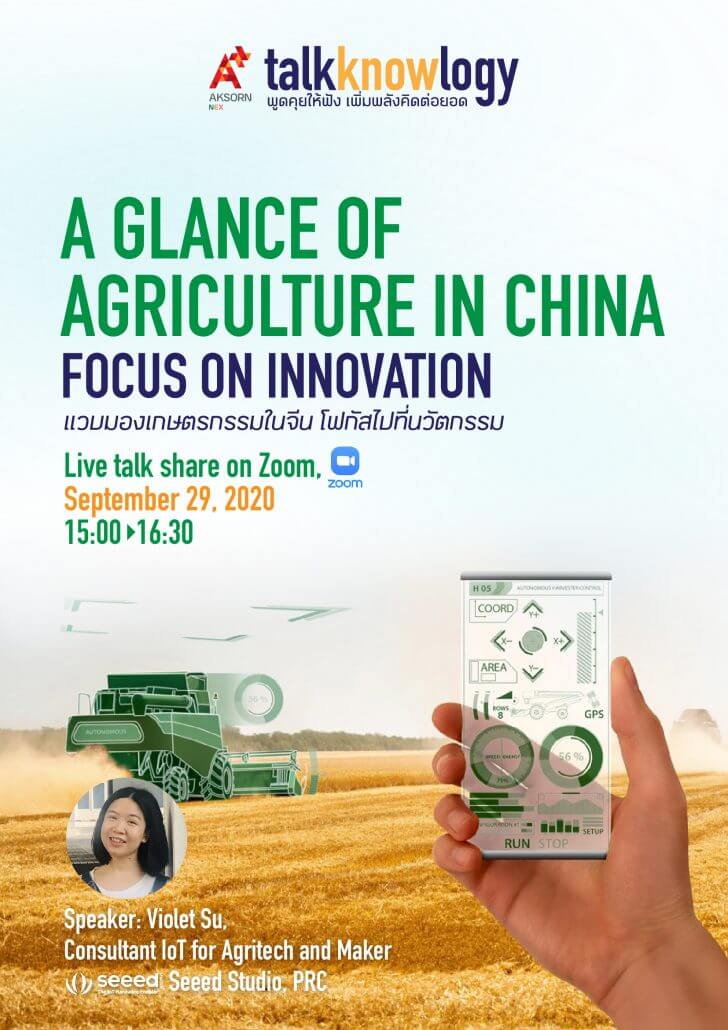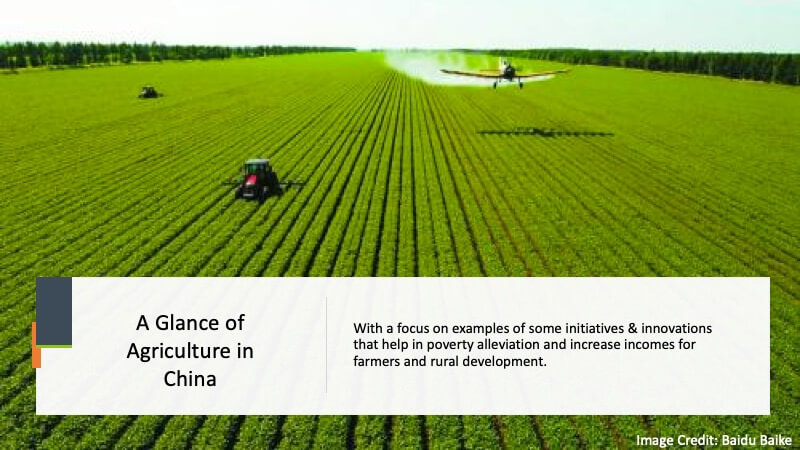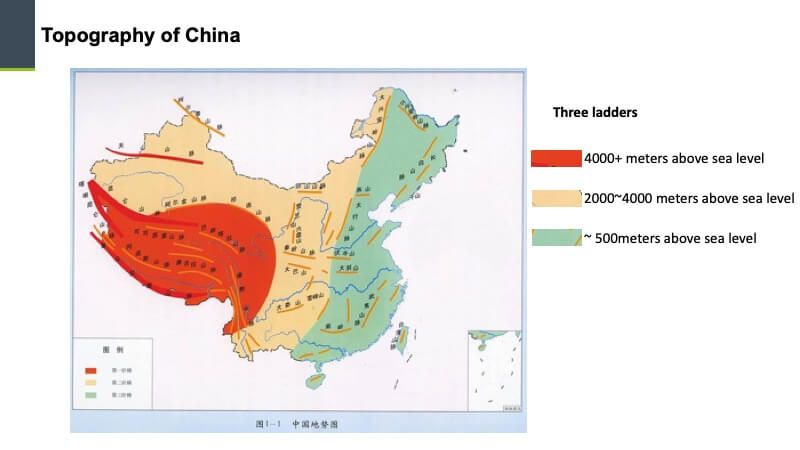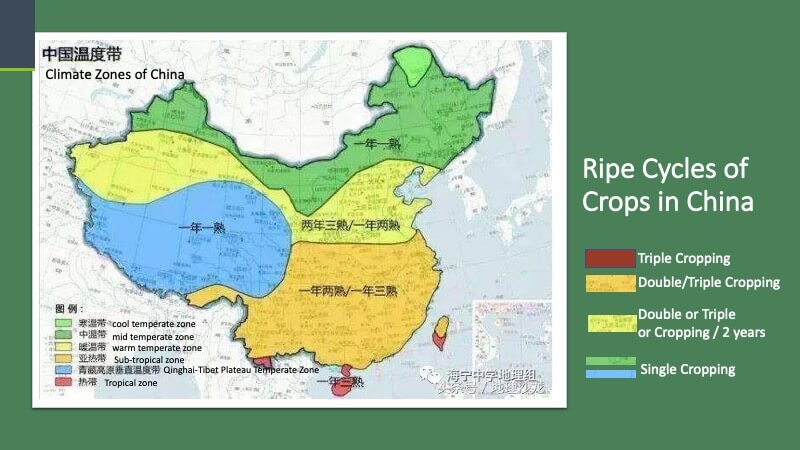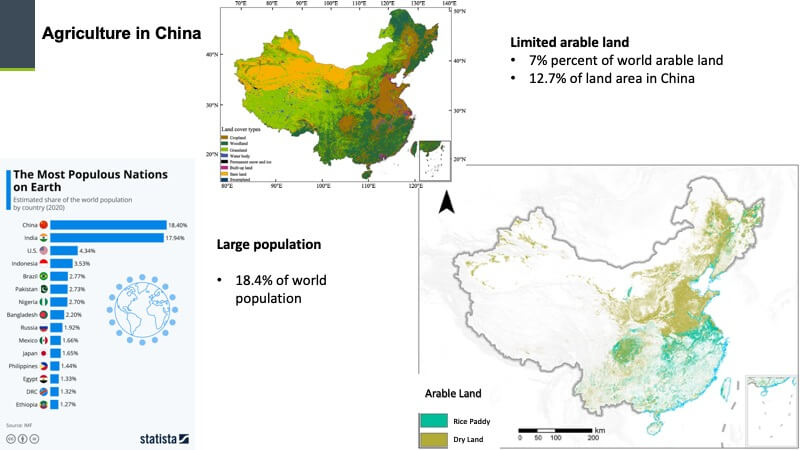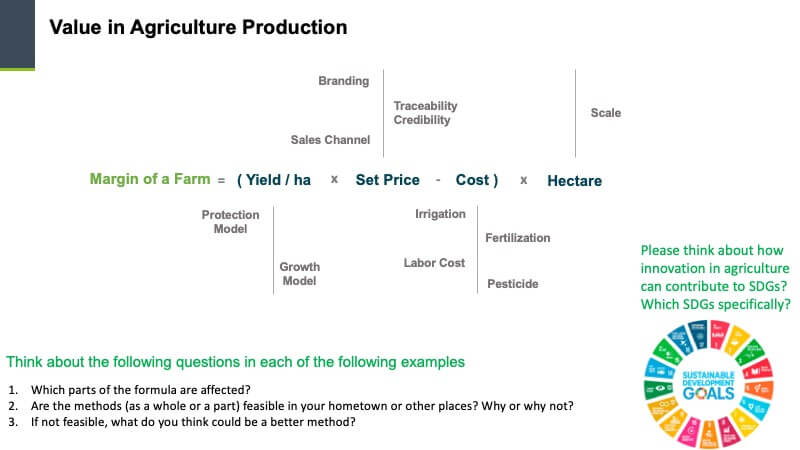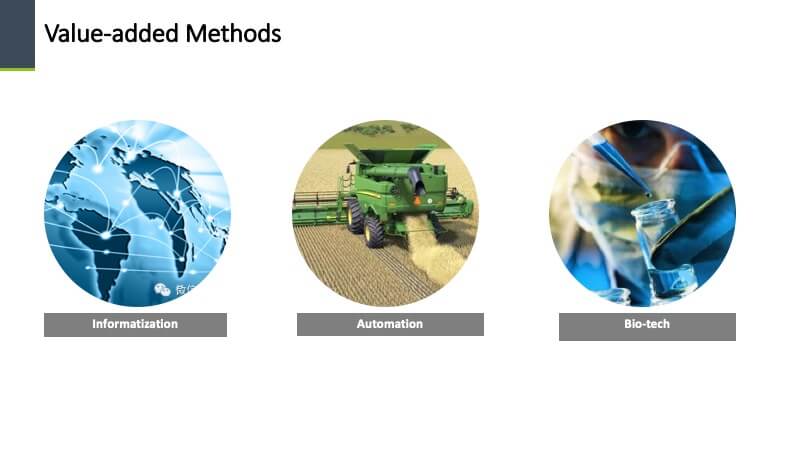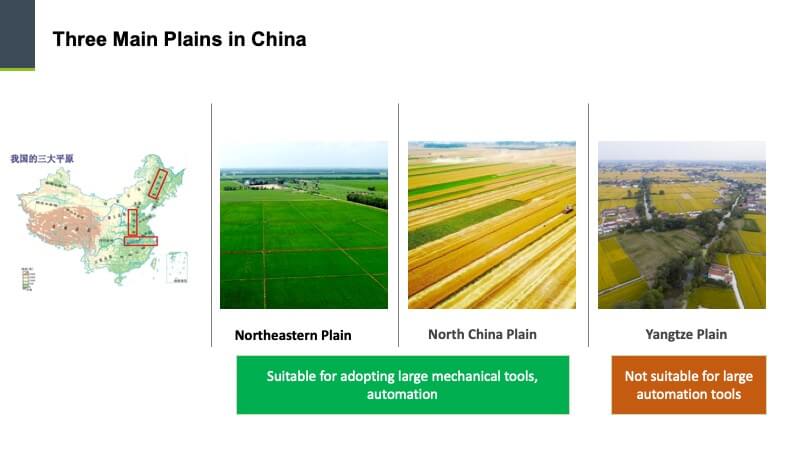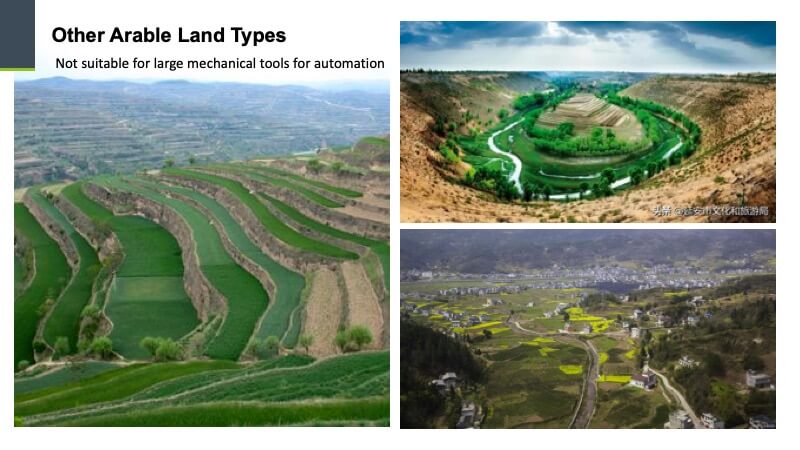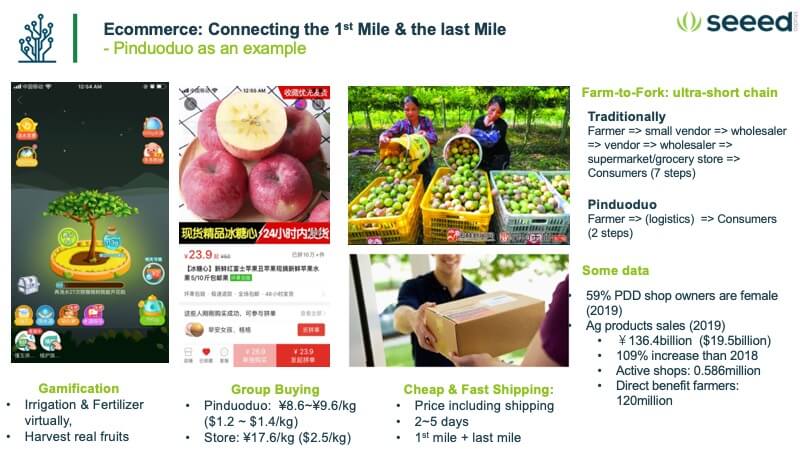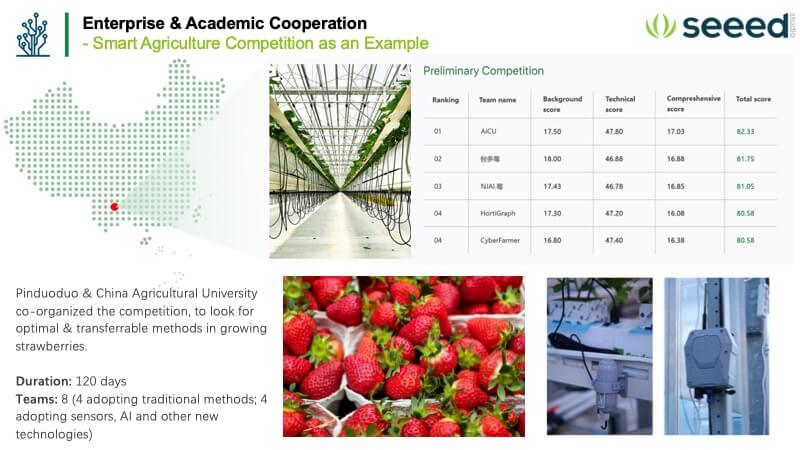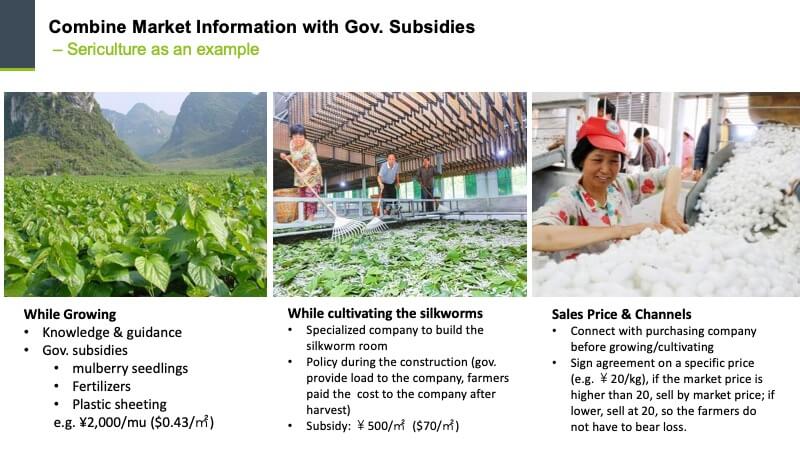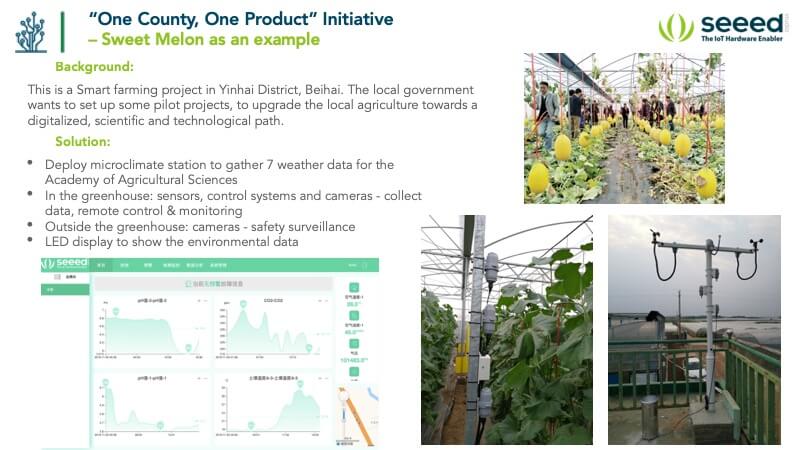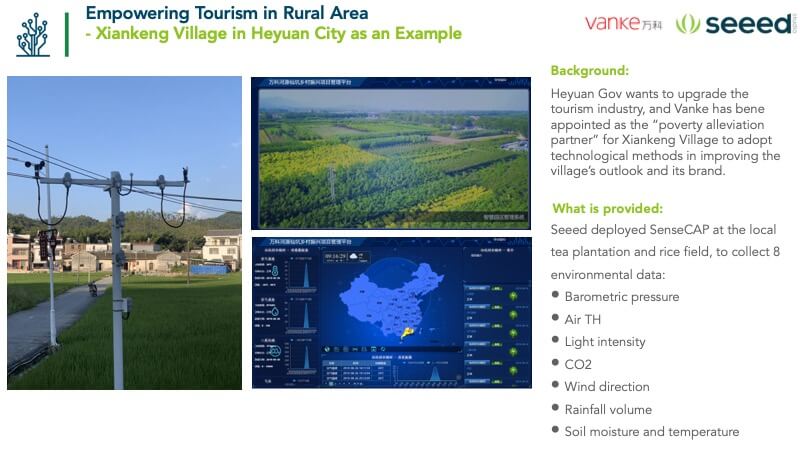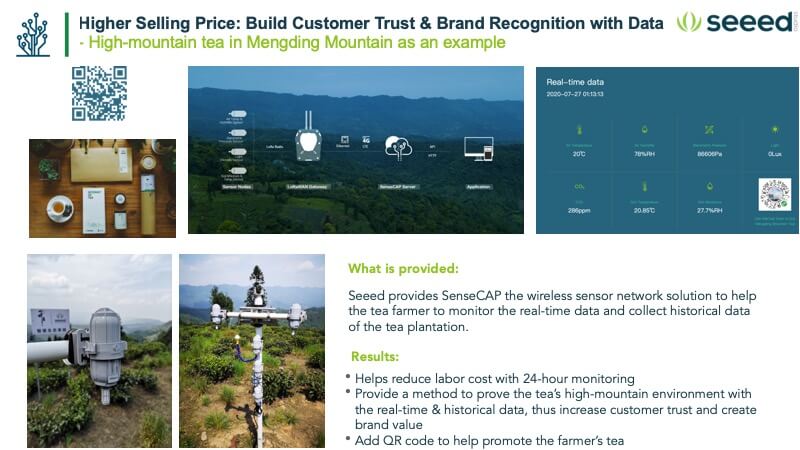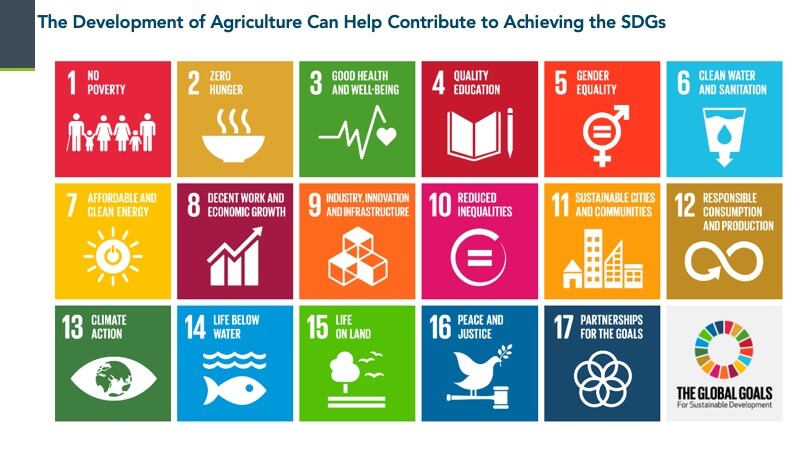A Glance of Agricultural Innovation in China
This blog introduces general info about agriculture in China, with a focus on examples of some initiatives & innovations that help in poverty alleviation and increase incomes for farmers and rural development.
Back in July, I was invited to give a sharing session to students at Kabakoo, the innovation school for Panafrican. The session was focusing on introducing some innovations in the agricultural industry in China. And then I shared similar contents with our partners Geneva-Tsinghua Initiative and Aksorn in August and September respectively.
I’ve received many messages from our customers, partners, and friends in the community, asking whether the session was recorded. And I am thinking why don’t I just write down the gist of the presentation and share it. And after beating my procrastination, here it is!
First of all, I’d like to mention that “farmers”, “rural areas”, and “agriculture” are often mentioned together in China as “三农 sān nóng” aka. The Three Rural Issues, which represent the “who”, “where” and “what” in rural development. In China, these three elements are inseparable whenever we talk about agriculture. During the presentation, I shared some general info about agriculture in China, as well as some innovations that help alleviate poverty, increase the income for farmers as well as boost rural development.
The presentation started with this fancy photo as shown above. And what’s worth mention here is that not all farms are like this in China.
Topography of China
As we all know the land types have a tremendous influence on agricultural activities. From the above map, we can see China’s geography consists of three main ladders: the first is more than 4000 meters above sea level, mainly the high mountains in Qinghai-Tibet plateau; the second ladder is about 2000 meters above sea level, including Xinjiang and some part of Inner Mongolia, etc; and the third is about 500 meters above sea level, mainly the eastern part of China, which is also the most populated areas in China.
Climate Zones of China
Because of the vast land, the climate in China is also very diverse, ranging from the tropical climate in the south to the subarctic climate in the north. As a result, agriculture is also very diverse both in crop types as well as ripe cycles, as shown in the above image. In different areas in China, there are different patterns and ripe cycles based on the climate, land types, and crop types.
Population & Arable Land in China
China’s population accounts for 18.4% of the world population (source: Statista: The Most Populous Nations on Earth), and the arable land is 7 percent of world arable land (source: WorldAtlas: What Are The Major Natural Resources Of China?). From the maps above we can see, the arable land is quite limited. According to the data by World Bank in 2016, the arable land accounts for roughly 12.7% of the total land of China. As a developing country, we are still facing a huge challenge in feeding the large and increasing population in China.
Value in Agriculture Production
If we want to add values to agriculture, we should know what actions can be taken. First, let’s take a look at the formula below, the simple way is to “lower the cost, or/and increase the yield”.
Value-added Methods in Agriculture
And there are different methods for lowering the cost and increasing the yield. From a broad sense, we can adopt (1) information technology, (2) automation, and (3) biotechnology in creating a bigger margin in agriculture.
Biotech is quite “alien” to me, so I won’t talk about it here. And in China, many places couldn’t adopt automation because of the land type (as seen in the images below) and during the presentation & this article, we’ll focus on exploring how to use informatization to add values to agriculture.
However, in the past practice in agriculture, the lack of data is a crucial issue. That’s also one of the main reasons why agriculture comes across some biggest obstacles when it comes to digital transformation. And we will see how we can use different methods, together with technology to gather data for better decision making in farming.
How E-commerce Is Empowering Farmers in China
The traditional way of trading in agricultural produce usually consists of many steps, as seen below
Farmers => Local Vendor => Wholesaler => Supermarket/ Fruit Store => Consumer (5 steps)
and each transit needs to have some margins. As a result, the farmers sell at a very low price as the beginning point, consumers pay for a very high price as the ending point. With the development of e-commerce, it helps shorten the “chain” from farm to fork with the following steps:
Farmer => (logistics) => Consumers (2 steps)
In this way, farmers can sell directly to consumers at a higher price, to ensure that they have a better income. On the other hand, the “higher price” provided by the farmer is much lower than the price that consumers get at the local supermarket or fruit store, then consumers can afford to purchase more diverse fruits.
Taking the eCommerce platform Pinduoduo as an example, the platform encourages group buying, which highly lowers the price of fruits when the citizens buy in groups online. And through gamification, it attracts users to be active on the platform
According to the data in 2019, there are 0.586 million active shops in Pinduoduo alone, and it creates $19.5billion in sales of agricultural products, which benefits 120million farmers directly. What’s more, it indirectly creates jobs for the rural and urban areas. The data shows female shop owners’ sales account for 59% of Pinduoduo’s total agricultural product revenues.
How Academia and Corporates collaborate to Advance Agricultural Development
Apart from the eCommerce platform, Pinduoduo also strives to push forward the adoption of technology in agriculture. This year, Pinduoduo collaborated with China Agricultural University to organize the Smart Agriculture Competition which encourages two categories of participating teams to grow strawberries: one using traditional methods and experience; the other adopting IoT technology with AI and Machine Learning-driven algorithms.
“Through this competition, the organizers hope to encourage more young farmers and scholars to develop localized solutions that will further lower costs and digitize agriculture,” according to the news from FAO about this competition.
Two key criteria of judging the science & technology teams are to have (1)high economic values; (2) transferrable technology that can be adopted in other farms after the competition.
This competition helps shed some light on how corporates and academia can collaborate to put researches into practices and bring digital transformation to agriculture.
According to the preliminary evaluation, the AiCU team ranked #1 in the competition. And they used Seeed SenseCAP LoRaWAN series products in monitoring and collecting the data. (proud face.jpg)
How the Government Bridges the Gap between Small Farmers and Market Needs
It’s worth mentioning that small-scale farming accounts for a major percentage of farming activities in China. And farmers usually choose to conduct any farming activities, such as what to grow, what to raise, etc. on their farms. Usually, farmers lack enough information and evaluation of the market needs, thus the economic yield is not as satisfactory.
An example: when farmers notice a certain agricultural commodity (such as potatoes) are popular with a high price on the market at a certain year, they all choose to grow the potatoes, expecting to have a high income when harvesting. However, there might be a surplus in the market when they harvest, thus farmers won’t be able to sell out even at a low price. As a result, the farmers are suffering from a great loss, let alone making a satisfying income.
In China, the government plays a role in balancing this gap. Based on the local climate and land etc., the government will encourage farmers to conduct certain farming activities for a better economic yield to meet the market needs. Farmers can choose to conduct the farming activities they prefer. However, if they choose the farming activities encouraged by the government, they will get extra support with policy and subsidies.
On the one hand, this helps bridge the gap between farmers and the market; on the other hand, it helps lower farmers’ risks in the process of farming. An example lies in developing sericulture. The government provides support in the whole process of (1) growing mulberry, (2) cultivating the silkworms, and (3) sales price & channels. The supports include providing expertise and training for farmers, providing subsidies for purchasing agricultural materials, and connect farmers with sales channels, etc. And they will provide certain pricing for farmers at the beginning. If the market price is higher, farmers will sell at market prices, if it’s lower than the “pre-set price”, the government will provide subsidies to make sure farmers do not suffer from the loss.
How the Government Helps Farmers to Adopt Technology in Growing Fruits with Higher Economic Yields
There is an initiative called “one county one product” in China. Through this initiative, the farmers can benefit from the support and subsidies from the government, similar to the example mentioned above. What’s more, one thing that has typical Chinese characteristics is that the local governments usually build demonstration parks to show farmers how the “one product” that is chosen can bring economic yield to farmers.
Also, the demonstration park usually serves as the “experiment lab,” where the government adopts new technologies in the farming process. Thus, through the real demonstrations, they will be able to show farmers that certain technologies are beneficial to farmers in helping them lower inputs and increase yield. Gradually, the farmers will be ready to embrace the technology by themselves.
An example is the sweet melon project in Yinhai District, Beihai City, Guangxi Province (my home province). Based on the suggestions from the agricultural experts at the Academy of Agricultural Sciences, the local government chooses sweet melon for this district. And they chose to deploy LoRaWAN gateway and sensors at the greenhouse where sweet melons are grown. The solution with accurate data helps the farmers in precise decision-making about the inputs of irrigation, fertilizer, and pesticide, etc. Thus they can ensure a higher yield with a better quality of sweet melon, which at the same time also lowers the farmers’ investment in materials and manpower. What’s more, it helps lower the burden of agricultural activities on our planet earth. To learn more about this project, please kindly visit here.
How Corporate and Government Collaborate to Vitalize Rural Development
Another initiative that China adopts for agriculture and rural development is “10,000 enterprises helping 10,000 villages“, which aims at leveraging corporates’ resources in poverty alleviation in rural areas. An example is vitalizing Xiankeng Village’s development through tourism. In this project, the main participants are Vanke, a famous real estate company in China; the local villagers, and local governments especially the tourism bureau.
When Vanke was planning to support Xiankeng village, they chose tourism. On the one hand, they renovate the village’s houses, showcase the Hakka cultural heritage and elements in the village. On the other hand, they choose to adopt IoT solutions in monitoring environmental data in the rice paddy and tea plantation, thus farmers have data to support their decision in managing the farming activities more efficiently.
What’s more, the LoRaWAN IoT solutions serve as weather stations to gather the environmental data for the tourism bureau to provide suggestions and promoting certain tourist activities in rural areas such as inviting people from the city to pick strawberries or have picnics at Xiankeng villages, etc. To learn more about this project, please kindly visit this page.
How Individual Farmers Adopt Technology to Increase Brand Recognition and Customer Trust
The previous examples introduce how corporates, academia, and governments play roles in supporting agricultural activities and rural development in China. And this last example, I will share how an individual farmer adopts emerging technologies in farming activities.
This is the so-called “IoTea” project that adopts LoRaWAN solutions in the high-mountain tea plantations in Ya’an city, Sichuan Province, southwestern China. Usually, tea farmers sell tea to a middle-man, who will ultimately sell to customers. Since farmers do not have good sales channels, and couldn’t prove to customers their teas are of high quality, the middle-mand has an upper hand and gives a low price to farmers.
The millennial Mr. Deng chose to take advantage of technologies in monitoring the environmental data. This not only helps him manage the tea plantation more efficiently with lower manpower but also provide proof about the tea’s growing environment to end-users. By scanning the QR code on the package, customers can see the real-time and historical data of the tea plantation. Thus, Mr. Deng manages to use technology to build customer trust, welcoming more returning customers; and this builds up brand recognition, with more new customers.
This article only shares some of my observations, and it couldn’t provide comprehensive information about agriculture in China. I believe that the advance of technology and its adoption will be beneficial to many industries, including agriculture, which has the longest history compared to other industries.
Agricultural Innovation can help Contribute to the SDGs
We do think that agriculture plays an important role in the sustainable development of our society. With more, better, and safer food, we can help many people get rid of hunger and poverty. With better economical development in rural areas and better income, farmers can afford to put their children into schools to get a better education. With fewer inputs of water in irrigation and fertilizer, we can help lower the impacts on the land, then creating a better living habitat for animals. The virtuous cycle will keep spiraling, which will bring benefits to many aspects of the natural and human society.
Here at Seeed, we envision to empower and serve traditional industries with technology. That’s one of the reasons we devote resources to developing industrial-grade IoT products for environmental monitoring needs such as in agriculture, smart city, and other outdoor scenarios. We are excited to see Seeed IIoT products applied in the real world to create values.
We are looking forward to collaborating with different partners in the private sectors, academia, and governments to contribute to the agricultural developments in China and beyond.
